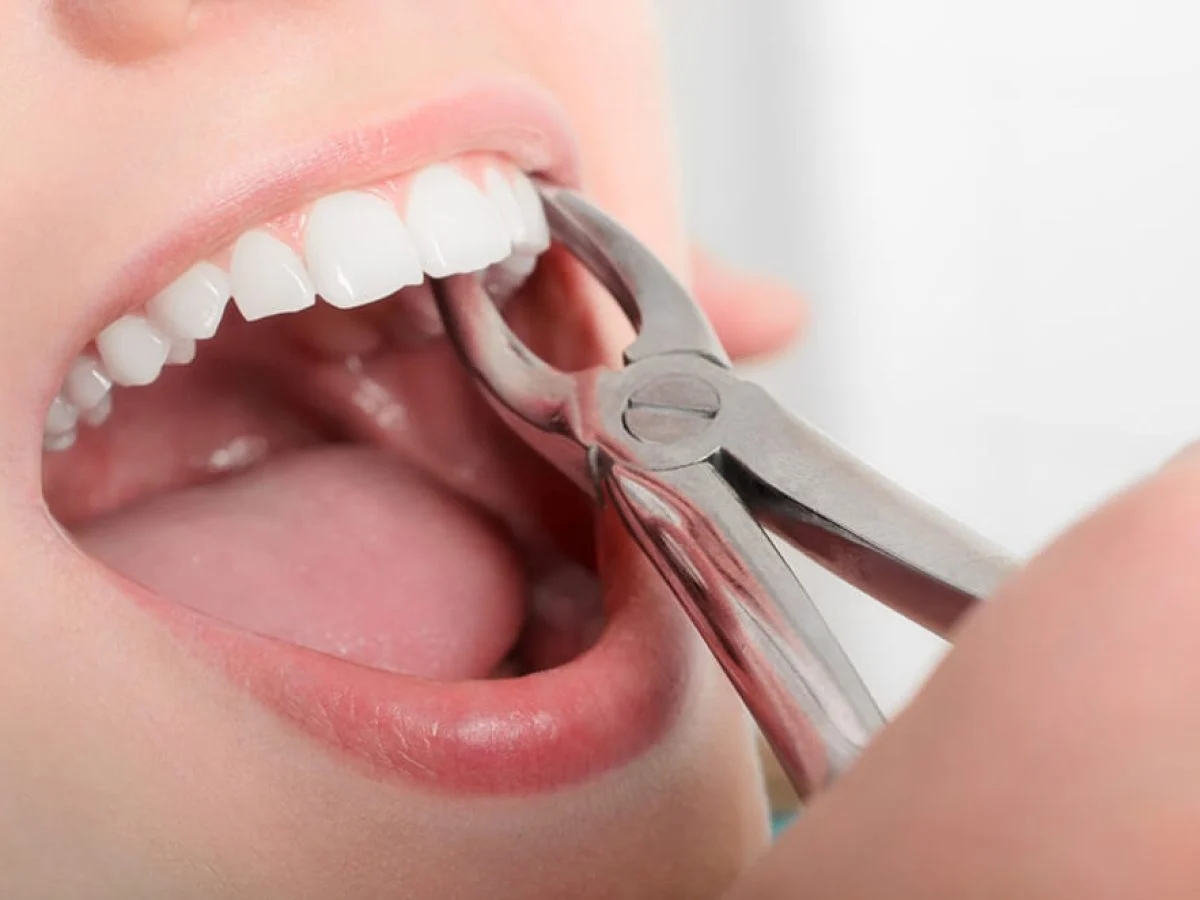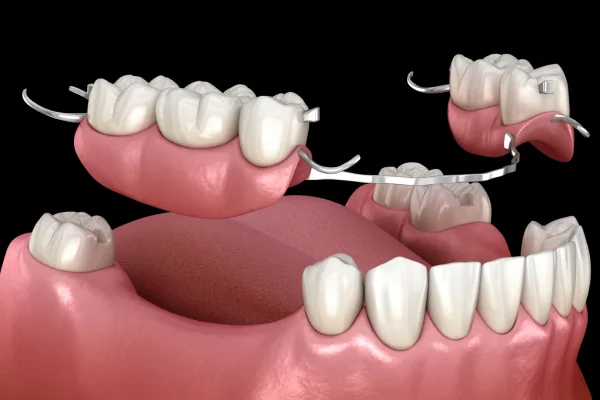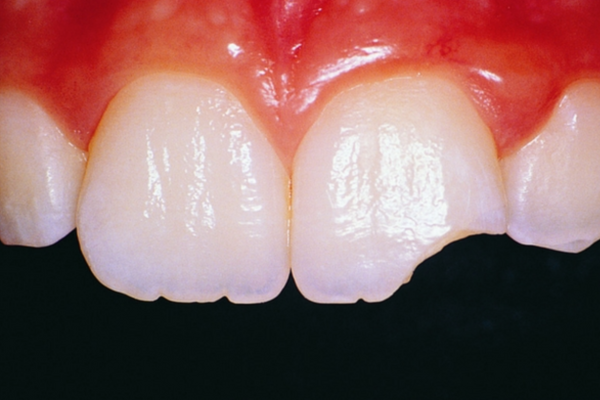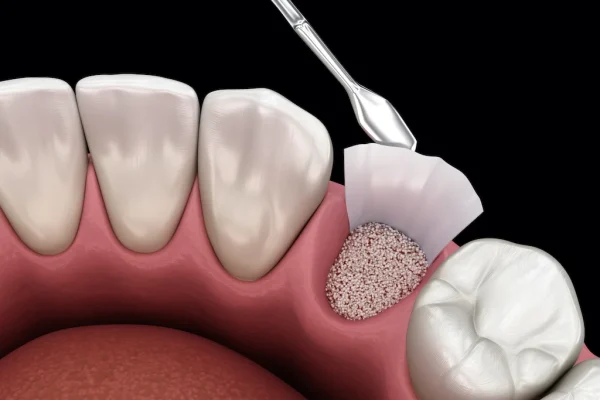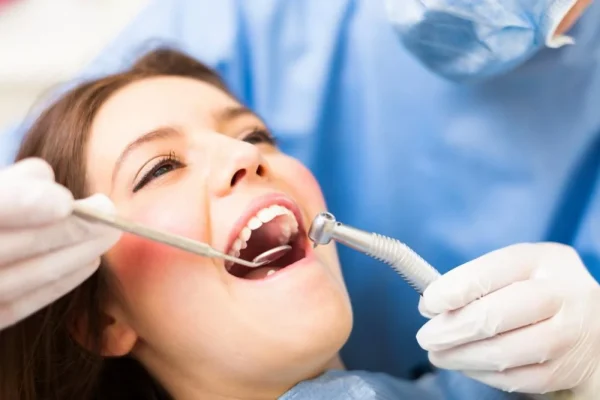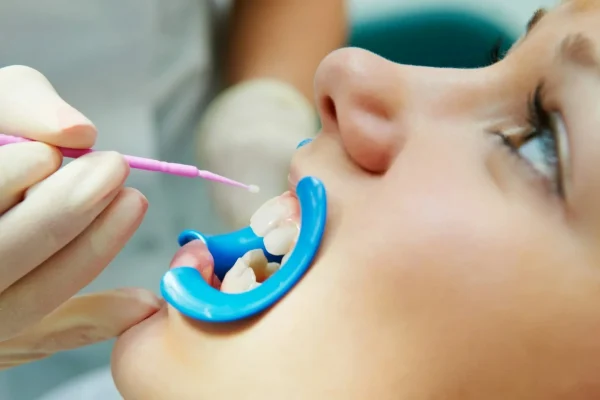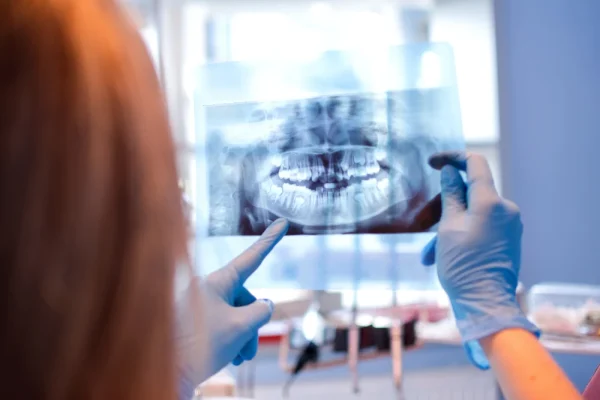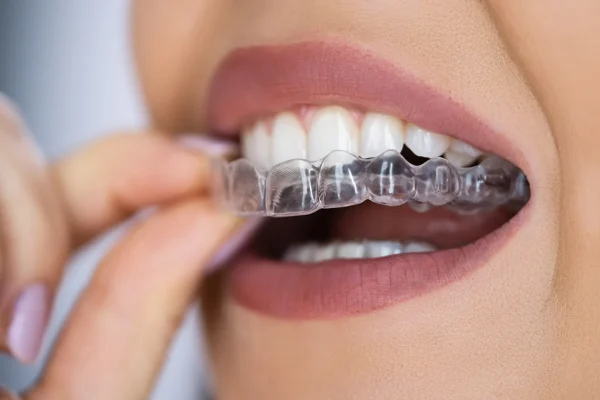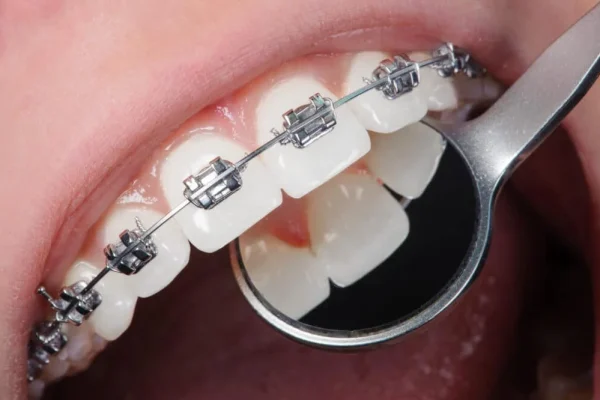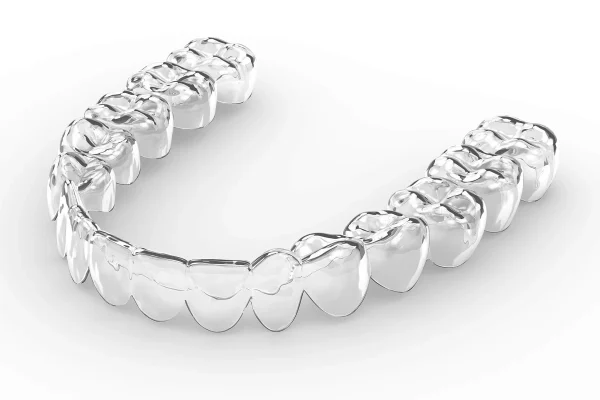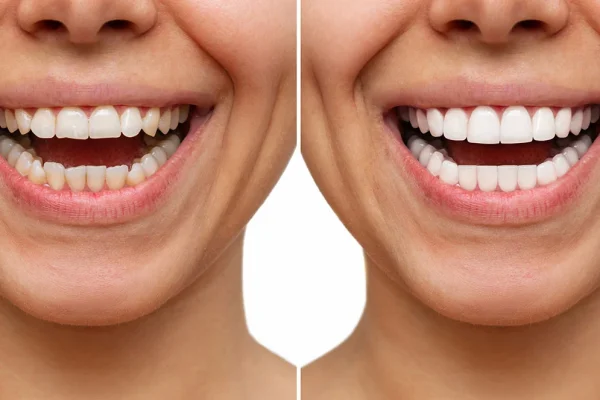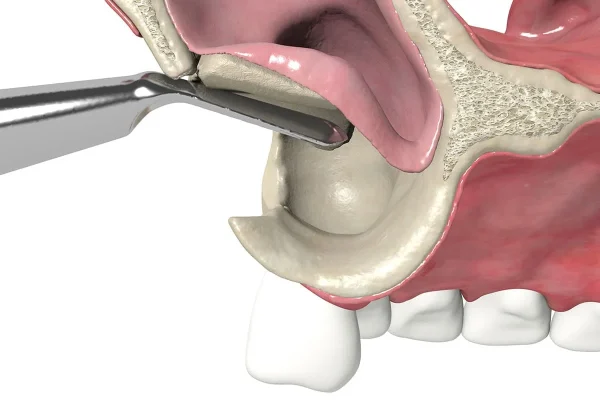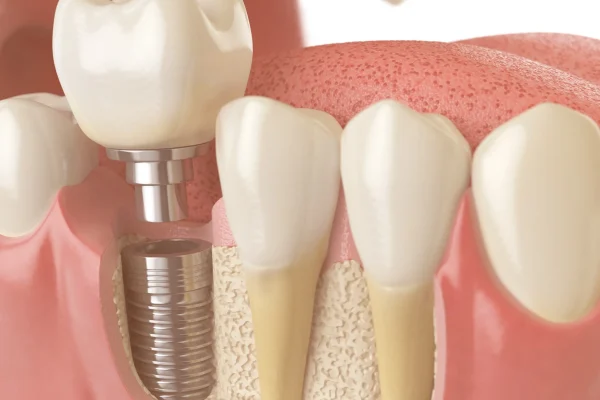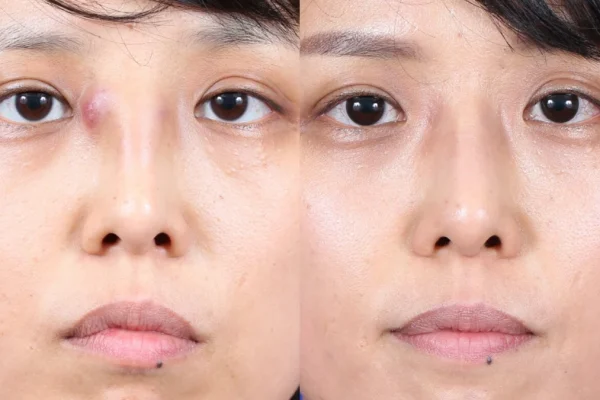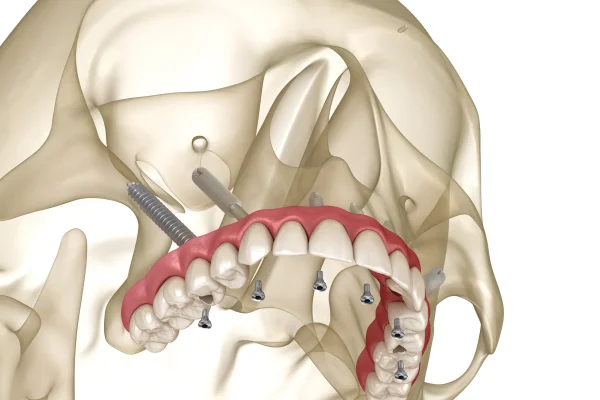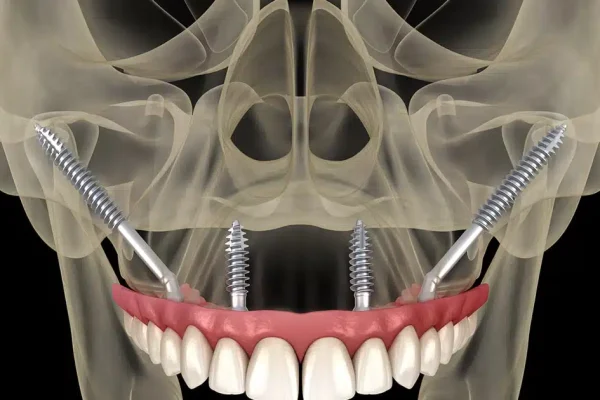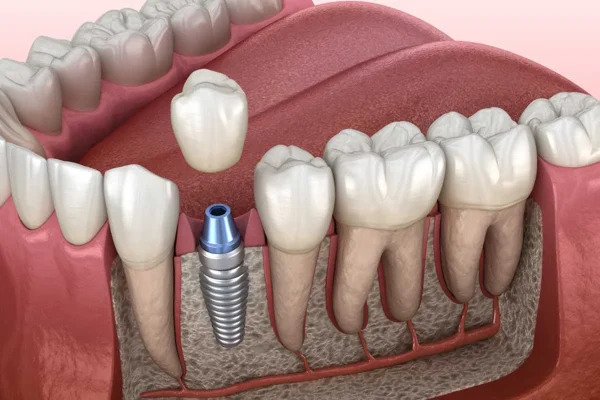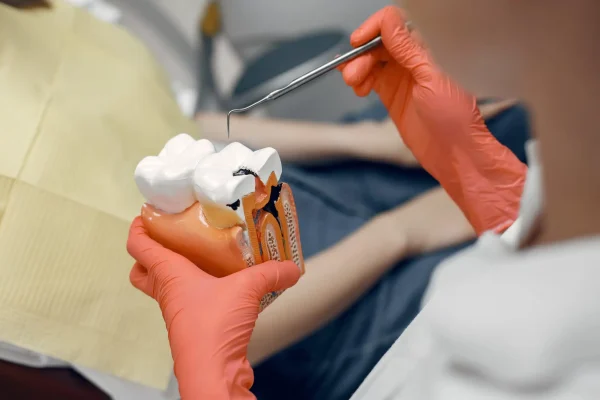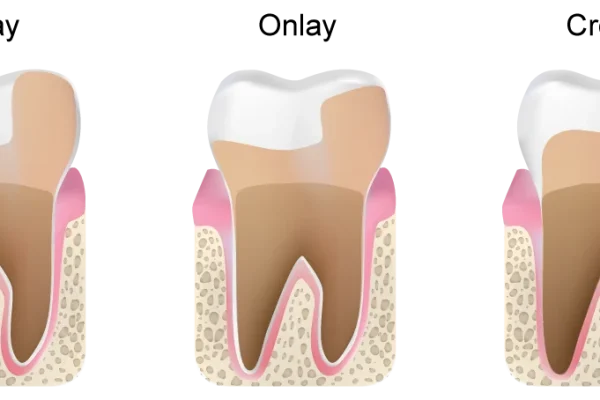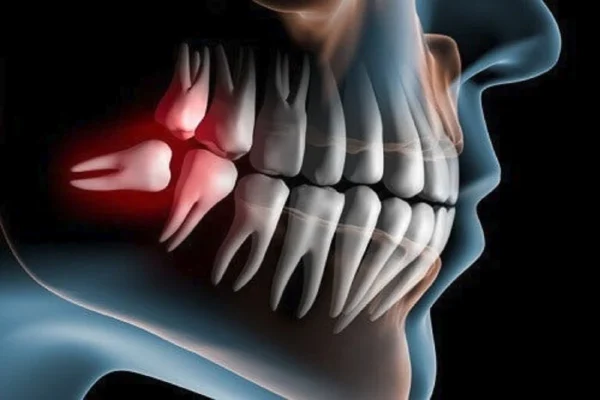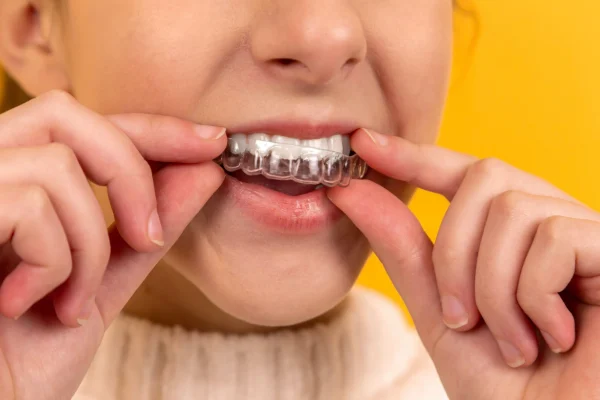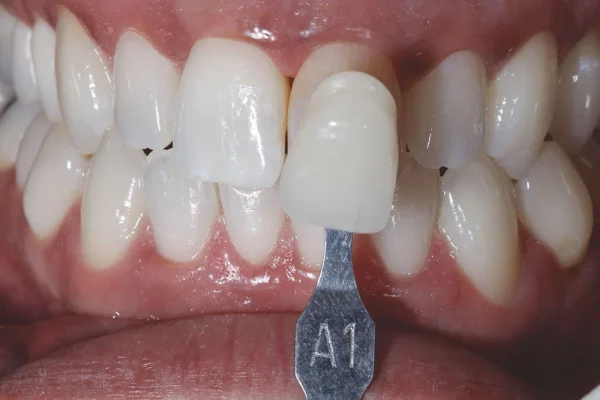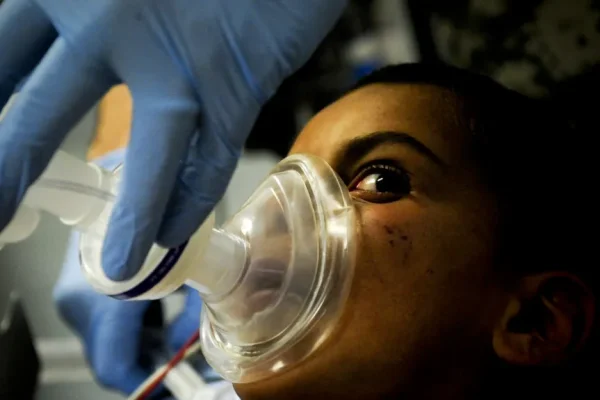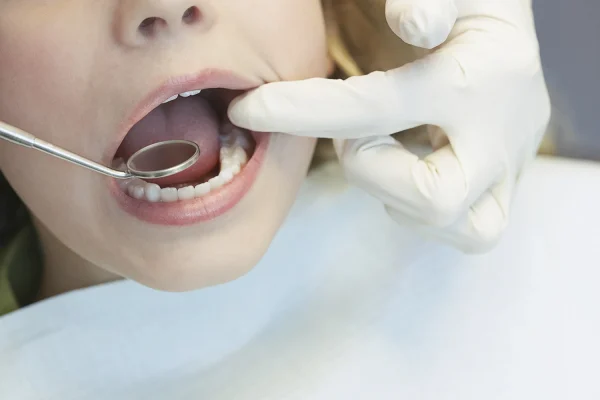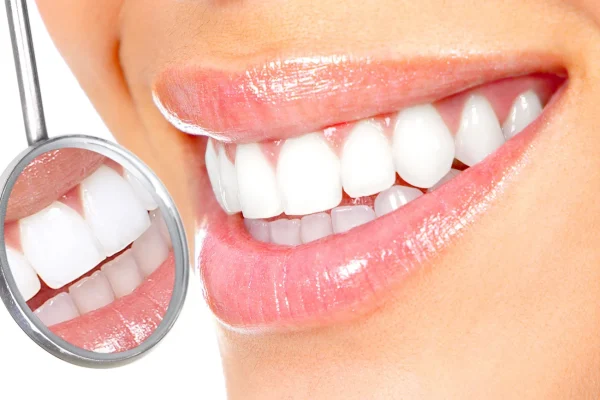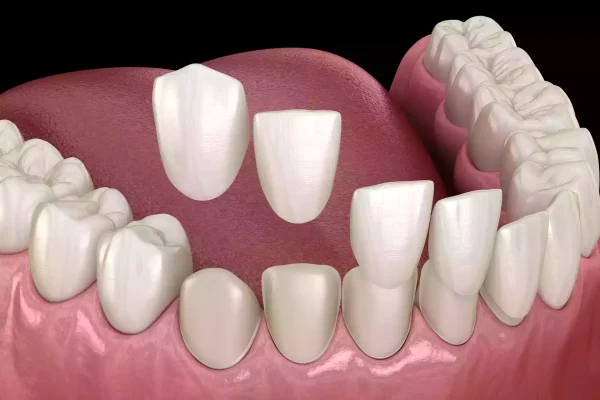What is Tooth Extraction? Understanding Dentist Tooth Removal

Have you been told you need a tooth extraction? The idea of tooth removal, or pulling a tooth as it’s commonly known, can sound daunting. But understanding what a dentist tooth removal actually entails can ease your anxieties. In simple terms, tooth extraction, also referred to as tooth pulling or tooth taken out, is the process of removing a tooth from its socket in the bone. It’s a procedure performed by a dentist or oral surgeon when a tooth is beyond repair, causing problems, or necessary for overall dental health. You might hear it called getting a tooth out or getting a tooth extracted, and these all refer to the same fundamental dental procedure. An extracted tooth is simply the tooth that has been removed.
From a more technical standpoint, dental extraction, or extraction in dentistry, is a branch of oral surgery focused on the removal of teeth. In medical terminology, you might encounter terms like exodontia or exodontics, which are the formal names for dental extraction. The dental extraction procedure itself is carefully planned and executed to minimize discomfort and ensure proper healing. Even a surgical molar extraction, which might sound intense, is still a form of dental extraction – just a more complex one. Understanding the basics of what is tooth extraction is the first step in preparing yourself for the procedure. Knowing what a normal tooth extraction site looks like post-procedure, and what to expect during healing, is also important for a smooth recovery, which we will delve into later in this guide.
What is the Dental Extraction Procedure? Exploring the Process of Pulling a Tooth
If you need to have a tooth removed, you might be wondering about the tooth pulling procedure. The process of pulling a tooth, while seemingly straightforward, is actually a carefully orchestrated set of steps designed for your comfort and safety. Whether it’s a simple tooth removal procedure or a more involved tooth extraction procedure, understanding the process can significantly reduce anxiety.
So, how to pull a tooth out, or rather, how does your dentist how to remove a tooth effectively? Generally, removing teeth falls into two main categories: simple extractions and surgical extractions. For visible teeth that are easily accessible, a simple extraction is usually performed. In this case, after administering local anesthesia to numb the area, your dentist will use instruments called elevators to gently loosen the tooth. Think of it as carefully wiggling the tooth to break the ligaments that hold it in place. Once loosened, forceps are used to grasp the tooth and remove it from the socket. This entire tooth pulling procedure in a simple extraction is typically quick and relatively uncomplicated.
However, sometimes teeth removing becomes more complex. If a tooth is broken below the gum line, impacted (meaning it hasn’t fully emerged), or has roots that are significantly curved or long, a surgical tooth extraction or surgery extraction might be necessary. This teeth extraction surgery is a more involved process often performed by an oral surgeon, though general dentists also perform surgical extractions. In a surgical removal of tooth, after anesthesia is administered (which might include sedation options for enhanced relaxation), a small incision is made in the gum tissue to access the tooth. In some cases, a bit of bone around the tooth might need to be removed to facilitate access. Sometimes, to make tooth removing easier, the tooth itself might be sectioned, or cut into smaller pieces, before it can be fully removed. This sounds more involved, but it’s a routine way to manage teeth that are difficult to extract in one piece. Regardless of whether it’s a simple or surgical tooth extraction, the aim is always the same: to remove the problematic tooth with as little trauma as possible, paving the way for proper healing.
Does Tooth Extraction Hurt? Understanding Pain and Painfulness of Tooth Removal
One of the most common concerns people have when faced with the prospect of tooth extraction is understandably: does tooth extraction hurt? The fear of pain is natural, but modern dentistry has made significant strides in pain management, especially when it comes to dentist tooth removal. The good news is that during the actual dental extraction procedure, you should feel little to no pain. Thanks to effective local anesthesia, the area around the tooth will be completely numbed, ensuring a relatively comfortable experience. So, to directly answer the question does dental extraction hurt?, during the procedure itself, the answer is generally no, you should not feel significant pain.
However, it’s important to address the nuances of pain and painfulness of tooth removal. While you shouldn’t experience sharp pain during the tooth pulling procedure itself, you will likely feel pressure. This pressure is necessary for the dentist to loosen and remove tooth. Think of it as a firm pushing or wiggling sensation rather than actual pain. After the anesthesia wears off, it’s normal to experience some level of discomfort, and you might be wondering is tooth removal painful? or specifically how painful is tooth extraction? The level of post-extraction pain varies from person to person and depends on the complexity of the extraction. A simple extraction usually results in mild to moderate pain, easily managed with over-the-counter pain relievers. More complex procedures, like a surgical tooth extraction or surgical molar extraction, might lead to slightly more pronounced discomfort in the initial days following the tooth removal. It’s also common for people to worry about tooth removed pain long after the procedure. Rest assured, significant pain typically subsides within a few days. Any lingering soreness or mild ache is usually manageable and a sign of the natural healing process. Understanding that discomfort is a normal part of extraction recovery helps manage expectations and ensures you know what to anticipate after your tooth pulling appointment.
What to Expect During Tooth Extraction Recovery?
Understanding tooth extraction recovery is just as crucial as knowing about the procedure itself. The period after tooth extraction, often referred to as extraction recovery or tooth extraction recovery, is when your body begins the natural healing process. Knowing what to anticipate during pulled teeth healing or pulled tooth healing can make the recovery smoother and less stressful. Immediately after extractions, it’s normal to experience some initial bleeding, which your dentist will manage by having you bite down on gauze. This pressure helps a blood clot to form in the socket – a vital first step in tooth pulled recovery. This blood clot acts like a natural bandage, protecting the bone and nerves underneath and initiating the extraction tooth recovery phase.
Over the next few days, you’ll likely notice swelling and some discomfort as part of the extraction recovery. This is a normal inflammatory response and a sign that your body is actively healing the area where the teeth extractions occurred. Whether it’s a routine teeth extraction or a more complex teeth extraction surgery, some level of swelling is to be expected. Even after teeth surgery, the body’s healing mechanisms kick in swiftly. The initial discomfort typically peaks within the first 24-48 hours and then gradually subsides. If you’ve had a molar removal procedure or specifically a molar removal recovery, you might find the recovery period to be slightly extended compared to smaller teeth, simply due to the larger size of the extraction site. Even if you just had a molar pulled, the general principles of tooth extraction recovery still apply. However, the size of the socket after a molar pulled might mean slightly more time is needed for complete healing. Remember, everyone’s body heals at its own pace, but understanding the typical tooth extraction recovery timeline will help you navigate this period with confidence and know what to expect each step of the way.
How to Manage Tooth Extraction Aftercare for Optimal Healing?

Proper tooth extraction after care is paramount for a smooth and speedy extraction recovery. The period immediately aftercare of tooth extraction is crucial in setting the stage for healing and minimizing complications. Think of aftercare of tooth extraction as actively participating in your body’s natural healing process. Your dentist or oral surgeon will provide specific post-operative instructions for tooth extraction, but understanding the core principles of tooth extraction after care empowers you to take control of your recovery. One of the first things to consider in molar extraction aftercare, or any tooth extraction after care for that matter, is managing the initial hours post-procedure. This is considered immediate management after tooth extraction. This typically involves keeping pressure on the gauze pad to control bleeding and allow that vital blood clot to form properly.
Beyond the immediate aftermath, effective aftercare of tooth extraction extends to daily practices for the next few days. This includes gentle cleaning teeth after extraction. While it might seem counterintuitive to brush near a healing wound, maintaining oral hygiene, while carefully clean teeth after extraction, is essential to prevent infection. You’ll need to be very gentle around the normal tooth extraction site, avoiding direct contact with your toothbrush for the first few days. Instead, focus on cleaning the other areas of your mouth as usual, and use recommended rinses to keep the extraction site clean without disturbing the clot. In essence, successful tooth extraction after care is about balancing protection of the extraction site with maintaining overall oral hygiene and following all post-operative instructions for tooth extraction diligently. Knowing what to do after tooth extraction in terms of cleaning, pain management, and diet is key to ensuring the best possible outcome and comfortable extraction recovery.
Molar Extraction: What to Expect When You Get a Molar Pulled?
For many, the idea of getting a molar pulled can feel a bit more significant than having a front tooth out. Molars, being larger and situated at the back of the mouth, might seem more intimidating to have extracted. You might be wondering, what exactly is involved in molar extraction and is back tooth removal any different? Understanding molar extraction surgery and the typical molar removal procedure can help alleviate some of this apprehension.
Essentially, a molar extraction is still a tooth extraction, just applied to one of your molars – those large, flat teeth at the back of your jaw designed for chewing. Reasons for needing a removal of a molar are similar to those for any other tooth: severe decay, fracture, advanced gum disease, or impaction. Often, when people talk about back molar pulled or needing back tooth removal, they are referring to wisdom teeth (third molars). However, you can require extraction of first or second molars too if they become unrestorable. The molar removal procedure itself will follow the same general steps of any tooth extraction procedure: anesthesia, loosening the tooth, and removal. Due to their size and the fact that molars typically have multiple roots, sometimes surgical molar extraction techniques are more frequently needed compared to front teeth. This might involve sectioning the tooth or removing a small amount of bone to gain better access for removal.
Whether it’s a lower molar extraction or an upper tooth extraction, the fundamental principles of the procedure remain consistent. While some anatomical differences exist between upper and lower jaws and different types of teeth, the expertise of your dental professional ensures a safe and effective molar removal. The good news is that even though molar removal recovery might feel like it takes slightly longer due to the larger socket, the aftercare instructions and healing processes are largely the same as for any other tooth extraction. So, while the idea of getting a molar pulled might sound a bit more intense, rest assured that it’s a routine procedure dentists perform regularly, and with proper aftercare, you can expect a successful recovery.
Are There Side Effects of Pulling Teeth?
While tooth extraction is a routine and generally safe procedure, like any medical intervention, there can be potential side effects of pulling teeth. Understanding these possible side effects of teeth removal can help you be prepared and know what to expect during your extraction recovery. It’s important to remember that most people experience only minor and temporary side effects that resolve quickly with proper aftercare.
The most common side effects directly following tooth removal are related to the body’s natural healing response. These include swelling, discomfort, and some bleeding at the tooth extraction site. Bruising around the extraction area, although less frequent, can also occur. These are all considered normal and are signs that your body is beginning the tooth extraction recovery process. The intensity of these side effects of pulling teeth can vary depending on the complexity of the extraction. For instance, a simple tooth extraction might result in milder, shorter-lived side effects compared to a surgical tooth extraction, especially a surgical molar extraction, which might involve more tissue manipulation and bone work.
Beyond these common and expected reactions, there are also potential complications, though they are less frequent. One well-known complication is “dry socket,” a painful condition that can occur when the blood clot dislodges prematurely from the extraction site. Infection is another potential risk, although good oral hygiene and following your dentist’s post-operative instructions for tooth extraction significantly minimize this risk. Nerve damage is a less common but more concerning potential side effect of teeth removal, particularly with lower molar extraction or wisdom tooth removal. This can sometimes lead to temporary or, in rare cases, persistent numbness or tingling in the lip, chin, or tongue. It is important to note that serious or long-lasting side effects of pulling teeth are not the norm. By being informed about the possibilities, you can be vigilant in monitoring your healing process and promptly contact your dentist if you experience anything beyond the expected mild discomfort and swelling during your extraction recovery.
How Long Does Pulled Tooth Healing Really Take?
A common question after tooth extraction is, understandably, about the tooth extraction healing time: what’s normal? People want to know how long does it take to recover from a tooth extraction? and get back to feeling like themselves again. Understanding the typical timeline for pulled tooth healing, or pulled teeth healing, can help manage your expectations and ensure you recognize when your extraction recovery is progressing as it should. While everyone heals at slightly different rates, there are general phases of recovery that most people experience after having a tooth pulled.
Immediately after the dental extraction procedure, the initial 24-48 hours are usually when you’ll experience the most noticeable symptoms. This is when swelling is typically at its peak, and discomfort is most pronounced. However, this is also the start of the active tooth pulled healing process. The blood clot is forming, and your body is working to repair the tissue. Even if you had a molar pulled, and are concerned about molar pulled healing duration, the initial healing phases are similar to other extractions, just perhaps a bit more intense in those first couple of days. You might also be wondering how long will the pain last after tooth extraction? Significant pain should start to subside after the first 48 to 72 hours. While some mild soreness might linger, the sharp, more intense pain should decrease steadily each day.
In terms of the physical wound, you might be curious how long does it take for the hole to close after tooth extraction? The visible hole in your gums will not close up immediately. Initially, it’s filled with a blood clot. Over the next couple of weeks, this clot is gradually replaced by new tissue and bone. While the surface gums will typically heal over in a couple of weeks, complete bone regeneration within the socket can take several months. However, in most cases, the area feels significantly better and functions normally within 1-2 weeks. For practical purposes, such as planning for time off work, you might be asking, how long are you off work after a tooth extraction? For a simple tooth extraction, many people feel well enough to return to normal activities, including work, the day after or even the same day. However, for more complex procedures like a surgical tooth extraction, especially teeth surgery, or a surgical molar extraction, taking 1-3 days off work is often advisable to allow for initial healing and manage any discomfort and swelling during this crucial early extraction recovery period.
Dry Socket After Tooth Extraction: When Is Dry Socket No Longer a Risk?
One of the most concerning potential complications after a tooth extraction, and something many people worry about during their extraction recovery, is dry socket. You might be asking yourself, what is dry socket? Simply put, dry socket, also known as alveolar osteitis, is a painful condition that can occur a few days after a tooth pulling procedure. It happens when the blood clot, which normally forms in the normal tooth extraction site and is crucial for healing after tooth removal, either doesn’t form properly or gets dislodged too early. This leaves the underlying bone and nerves exposed, leading to significant pain.
A common concern is does a dry socket hurt immediately? Typically, no. The pain of dry socket usually doesn’t begin right after the extraction. In fact, in the first day or two post-extraction, your pain might be manageable and seem to be improving, which is normal tooth extraction recovery. However, dry socket pain typically emerges a few days later, often around day 3 to 5 after the dental extraction procedure. This delayed onset is one of the hallmarks of dry socket, and it can be quite distinct from the regular post-extraction discomfort, often being described as a throbbing, intense pain that can radiate to the ear.
So, naturally, people want to know when is dry socket no longer a risk? The risk of developing dry socket is highest in the first few days following tooth extraction, specifically within the first week. After about 7 to 10 days post-extraction, the gum tissue starts to heal significantly, and the risk of dry socket dramatically decreases. While it’s technically possible to develop it later, it becomes increasingly unlikely as the extraction site heals and new tissue covers the socket. Following your dentist’s post-operative instructions for tooth extraction meticulously, especially regarding avoiding smoking, using straws, and forceful rinsing in the initial days, is the best way to minimize your risk of experiencing this uncomfortable complication and ensure a smoother extraction recovery.
Managing Pain After Tooth Extraction: What’s the Best Painkiller?
Managing pain is a primary concern for anyone undergoing tooth extraction, and understandably so. You might find yourself searching for the best painkiller for tooth extraction? or wondering what is the best painkiller for tooth extraction?. Fortunately, there are effective strategies to manage discomfort and ensure a more comfortable extraction recovery. For many people experiencing typical post-extraction pain, over-the-counter (OTC) pain relievers are often sufficient. Medications like ibuprofen (Advil, Motrin) and acetaminophen (Tylenol) are commonly recommended and readily available. Ibuprofen, in particular, is often favored because it helps reduce both pain and inflammation, which are key components of post-extraction discomfort. Following the recommended dosage instructions on the packaging, or as advised by your dentist, is crucial for safe and effective pain relief during your tooth extraction recovery.
However, pain experiences vary, and you might be concerned about what day is most painful after tooth extraction? or what is the most painful day after tooth extraction?. While individual experiences differ, many people find that the second and third day after tooth extraction tend to be the most uncomfortable. This is often when swelling peaks and the initial effects of the local anesthesia have completely worn off. Some even describe day 3 worst after tooth extraction?, and while it might not be universally “the worst,” it is frequently reported as a period of heightened discomfort for some patients during pulled tooth healing. Understanding why is day 3 the worst after tooth extraction? often relates to the natural inflammatory process reaching its peak, as the body is actively working to heal the tooth removed area.
You might also be experiencing certain sensations and wonder does throbbing mean healing tooth extraction? While some mild throbbing can be normal as blood flow increases to the healing site, persistent or intense throbbing, especially if accompanied by increasing pain, could be a sign of a complication like dry socket or infection. It’s important to pay attention to the intensity and character of your pain. Is it just general soreness, or is it sharp, radiating, and relentlessly throbbing? Being aware of your normal tooth extraction site sensation can help you differentiate typical healing from potential problems. If you find yourself asking, gum still sore 7 days after extraction?, some lingering tenderness is not unusual at the one-week mark, but persistent or worsening severe pain should definitely be discussed with your dentist. And for those wondering what hurts more, top or bottom tooth extraction?, experiences vary, but lower molar extractions are sometimes associated with slightly more post-operative discomfort due to denser bone and proximity to nerves. Ultimately, if you are concerned about tooth removed pain levels or anything feels what’s not normal after a tooth extraction?, it’s always best to call the dentist after tooth extraction or seek advice from your dental professional. Don’t hesitate to reach out if you experience severe pain after tooth extraction or if your pain isn’t well-managed with OTC pain relievers. They can assess your situation and recommend stronger pain medication or investigate for any potential complications to ensure a comfortable extraction recovery.
Practical Tips: Do’s and Don’ts for Tooth Extraction Aftercare
Navigating tooth extraction after care can feel overwhelming, but it’s truly about following some key do’s and don’ts after tooth extraction to support your body’s natural healing abilities. Knowing what to do after tooth extraction immediately and in the following days is essential for preventing complications and ensuring a comfortable extraction recovery. Think of these do’s and don’ts after tooth extraction as your guide to a smoother healing process.
Let’s start with the “Do’s.” Do keep the gauze pad placed by your dentist firmly in place for the recommended time, usually around 30-45 minutes, to encourage blood clot formation – this is crucial for immediate management after tooth extraction. Do take any prescribed medications, including pain relievers and antibiotics, exactly as directed. Do apply ice packs to your cheek in the extraction area for the first day or so to minimize swelling. Do rest and avoid strenuous activity for at least the first 24 hours. When it comes to diet, do stick to soft foods initially – what should I eat the first night after a tooth extraction? and in the days following? Opt for yogurt, smoothies, mashed potatoes, soup – anything that requires minimal chewing. As you heal, you can gradually reintroduce more solid foods, but still be mindful of the extraction site. And do maintain gentle oral hygiene. While you should clean teeth after extraction carefully, avoid brushing directly on the extraction site for the first few days. Instead, gently rinse with warm salt water or a prescribed mouthwash, following your dentist’s post-operative instructions for tooth extraction regarding rinsing frequency and timing. Wondering how to help gums heal faster after tooth extraction? Gentle salt water rinses are your friend, promoting cleanliness and soothing the tissues. You might even be wondering how can I make my tooth extraction heal faster? While you can’t drastically speed up the process, diligently following these “do’s” creates the optimal environment for natural healing to occur effectively.
Now for the “Don’ts.” Crucially, don’t disturb the blood clot. Avoid vigorous rinsing, spitting, or using a straw for at least 24 hours, as these actions can dislodge the clot, potentially leading to painful dry socket. Don’t smoke. Smoking significantly impairs healing and dramatically increases the risk of dry socket and infection. Don’t drink alcohol or hot liquids in the first 24 hours, as these can also hinder clot formation and increase bleeding. Don’t eat hard, crunchy, or chewy foods that could irritate the extraction site or get lodged in the socket in the initial healing phase. Thinking about specific actions, should I keep my mouth shut after tooth extraction? Not necessarily “shut,” but avoid excessive talking or activities that move your mouth and jaw excessively in the very beginning, as too much movement can sometimes disrupt the initial clot formation. In summary, effective tooth extraction after care is a balance of promoting cleanliness and healing while diligently avoiding actions that could disrupt the delicate early stages of recovery. By following these do’s and don’ts after tooth extraction, and remembering your post-operative instructions for tooth extraction, you’ll be actively contributing to a smoother and more comfortable extraction recovery.
Managing Swelling: How Long Will Face Be Swollen After Tooth Extraction?
One of the most visible side effects of pulling teeth, and a common concern after tooth extraction, is facial swelling. It’s completely normal to wonder, how long will my face be swollen after tooth extraction? or in short form, how long will face be swollen after tooth extraction? Swelling after tooth removal is a natural part of the body’s healing process. It’s your body’s way of responding to the minor trauma of the procedure and initiating the extraction recovery phase. This swelling is essentially caused by inflammation, as fluids rush to the area to begin the repair process. Don’t be alarmed if you notice your cheek or jaw area puffing up – it’s a typical and temporary response.
The good news is that post-extraction swelling is usually most pronounced in the first 24 to 48 hours after tooth extraction. This means that you’ll likely see the swelling gradually increase over the first day, reaching its peak around the second day. After this point, the swelling should begin to subside. While you might still notice some puffiness, particularly in the morning, the overall intensity should lessen each day as you progress through your tooth extraction recovery. The duration of noticeable swelling varies from person to person and also depends on the complexity of the dental extraction procedure. A simple extraction might result in minimal swelling that resolves within a few days. However, a more involved surgical tooth extraction, especially surgical molar extraction, can lead to more significant swelling that might persist for up to a week, or in some cases, slightly longer.
Even though swelling is normal, there are steps you can take to help manage it and potentially minimize its duration during your extraction recovery. Applying ice packs to the outside of your cheek in the area of the tooth removed for the first 24 hours is highly effective in reducing inflammation and consequently, swelling. Using an ice pack for 15-20 minutes at a time, several times a day, can make a noticeable difference. After the first 24 hours, some dentists recommend switching to warm compresses, as warmth can promote blood flow and help resolve lingering swelling. Over-the-counter anti-inflammatory medications, like ibuprofen, taken as directed by your dentist or according to package instructions, can also help manage swelling and discomfort simultaneously. Rest assured that while facial swelling after tooth pulling can be a bit bothersome, it’s a temporary phase in your extraction recovery journey and will gradually resolve as your body heals.
Time Off Work: How Many Days Should You Take Off for Tooth Extraction?

Planning for tooth extraction recovery also involves considering practicalities like time off work. You might be wondering, how many days should I take off for a tooth extraction? or in a more concise way, how long are you off work after a tooth extraction? The answer isn’t always straightforward and depends largely on the type of dental extraction procedure you undergo and the nature of your job. For a routine, uncomplicated tooth extraction, often referred to as a simple tooth extraction, you might be pleasantly surprised at how quickly you can resume your normal activities. In many cases, for a simple tooth removal, people feel perfectly capable of returning to work the very next day, or even on the same day, especially if their job is not physically demanding. So, the answer to should I take a day off work after tooth extraction? might be “not necessarily” for a straightforward extraction.
However, if you are undergoing a more complex procedure, such as a surgical tooth extraction, teeth surgery, or particularly a surgical molar extraction, taking some time off work is generally advisable. These procedures are more involved and can result in more pronounced post-operative effects like swelling, discomfort, and general fatigue. For these types of extractions, taking 1 to 3 days off work is a reasonable guideline to allow your body to begin the initial extraction recovery phase without the added stress of work. This allows you to focus on rest, manage any discomfort effectively with pain medication, and keep up with your tooth extraction after care routine without feeling rushed. You might even find yourself considering, should I take day off work tooth extraction? even if it’s just for a simple extraction if your job is physically strenuous or requires a lot of talking. Ultimately, assessing your individual circumstances and the demands of your job is key. If you have a physically demanding job, or one that requires extensive talking or public interaction (which might be uncomfortable with swelling), taking a day or two off, even after a seemingly simple extraction, can be beneficial. And for those facing more complex teeth removing scenarios like surgical molar extraction, planning for a bit more downtime – perhaps 2-3 days – will likely contribute to a more comfortable and less stressful extraction recovery overall. When in doubt, it’s always best to err on the side of caution and allow yourself adequate time to heal and recover properly.
Blood Clot and Rinsing: What If You Accidentally Rinse Your Mouth?
A critical element of successful tooth extraction recovery hinges on the formation and protection of the blood clot that develops in the normal tooth extraction site immediately following the procedure. This blood clot is not just a nuisance; it’s the foundation for proper healing. It acts as a bandage, protecting the underlying bone and nerve endings, and it’s the matrix into which new tissue will grow. Therefore, a frequent concern patients have, and a vital aspect of tooth extraction after care, is around rinsing and the integrity of this clot. Specifically, many people worry: what happens if I accidentally rinse my mouth after tooth extraction? And understandably so, because gentle rinsing is usually part of good oral hygiene.
The key is to understand the timing and forcefulness of rinsing, particularly in the first 24 hours after extractions. During this initial period, the blood clot is still quite fragile and can be easily dislodged. Therefore, forceful rinsing, swishing liquids vigorously, or even using a Waterpik directly in the extraction area is strongly discouraged. This is why dentists often advise against rinsing at all for the first 24 hours. If you accidentally rinse mouth after tooth extraction?, especially within that initial period, don’t panic immediately. A gentle, accidental rinse is less likely to cause a major problem than a vigorous, prolonged swishing action. However, it’s best to avoid rinsing altogether if possible, as even a gentle rinse carries a slight risk of disturbing the clot.
You might then be wondering, how do I know if I dislodged my blood clot? Sometimes it’s obvious – you might feel a sudden wash of liquid in the extraction site, or see fresh bleeding. However, often, it’s less clear. Signs that you might have dislodged the clot include a sudden increase in pain a few days after the extraction, often described as a deep, throbbing ache, and potentially a foul taste or odor emanating from the extraction site – these are all classic symptoms of dry socket. If you suspect you’ve dislodged the clot or are experiencing these dry socket symptoms, it’s important to contact your dentist. They can assess the tooth removed site and provide appropriate treatment, which might involve medicated dressings to promote healing and pain relief. Beyond the first 24 hours, gentle rinsing with warm salt water is usually recommended as part of your tooth extraction after care routine to keep the area clean and promote healing, but always follow your dentist’s specific instructions. The emphasis is always on gentle – rinse mouth after tooth extraction? Yes, but gently! Avoid vigorous swishing, and focus on gently irrigating the area to remove food debris without disturbing the crucial blood clot. By being mindful of rinsing, especially in the critical early healing phase, you can significantly reduce the risk of complications like dry socket and support a smoother, more comfortable extraction recovery.
White Stuff in the Socket: Is It Normal After Tooth Extraction?
As you navigate your tooth extraction recovery, you might start to observe changes in the normal tooth extraction site. One common observation that can cause concern is the appearance of white stuff in my tooth extraction site. It’s natural to wonder, what is the white stuff in my tooth extraction site? and immediately worry if it’s a sign of infection or a problem with pulled tooth healing. The good news is that often, this “white stuff” is actually a perfectly normal part of the healing process and not a cause for alarm. In many cases, what you’re seeing is granulation tissue forming. This tissue is a healthy mix of new collagen, blood vessels, and white blood cells, and it’s a sign that your body is actively repairing and rebuilding the area after tooth extraction. This granulation tissue is often whitish or slightly yellowish in appearance and can have a slightly textured or stringy look. Think of it as the foundation for new gum tissue to grow and close the tooth removed socket.
So, is white stuff in tooth extraction site normal? In many instances, yes, especially if it appears a few days after the dental extraction procedure and is accompanied by overall improvement in pain and swelling. However, it’s also important to be aware that sometimes “white stuff” could potentially indicate something else, such as food debris trapped in the socket or, less commonly, an infection. Food particles can sometimes get lodged in the extraction site, especially in the initial days when the socket is still open. These can appear whitish or yellowish and might be mistaken for granulation tissue. Gentle rinsing, as advised by your dentist in your post-operative instructions for tooth extraction, usually helps to remove food debris. True infection of a normal tooth extraction site is less common, but it is a possibility. Signs of infection typically go beyond just white stuff and include more pronounced symptoms like increasing pain, significant redness, swelling that worsens after the initial few days, pus (which can also appear whitish or yellowish), fever, and a foul odor or taste. If you are unsure whether the white stuff in my tooth extraction site is normal granulation tissue, food debris, or something more concerning like infection, it’s always best to err on the side of caution and contact your dentist. They can properly assess the tooth removed site and reassure you or provide appropriate treatment if needed, ensuring a smooth extraction recovery.
Oral Sex After Tooth Extraction: Is It Allowed?
This might be a question you feel a little awkward asking, but it’s a valid consideration for many individuals undergoing tooth extraction. So, directly addressing the question, can you perform oral after tooth extraction? or simply oral after tooth extraction? It’s generally advised to refrain from oral sexual activity for a certain period following your dental extraction procedure. While it might seem unrelated to pulled tooth healing, engaging in oral sex too soon after tooth removal can actually pose risks to your extraction recovery. This is not a topic always openly discussed, but understanding the reasons behind this recommendation is an important aspect of comprehensive tooth extraction after care.
The primary concern, as with many do’s and don’ts after tooth extraction, revolves around protecting the blood clot that forms in the normal tooth extraction site. Oral sex, especially the sucking motions involved, can create negative pressure within the mouth. This suction force can potentially dislodge the delicate blood clot, which, as we’ve discussed, is critical for initiating and maintaining the pulled teeth healing process and preventing dry socket. Disrupting this clot early on can significantly delay your extraction recovery and lead to considerable discomfort and complications.
Furthermore, the mouth is home to a diverse range of bacteria. While your mouth naturally maintains a balance, introducing additional bacteria to a fresh surgical site, even from a partner’s mouth, can slightly increase the risk of infection during the initial tooth pulled recovery phase. Although the risk is relatively low with good oral hygiene and a healthy immune system, it’s a factor to consider when focusing on optimal tooth extraction after care. Beyond the blood clot and infection risks, the physical activity associated with oral sex, even if seemingly gentle, can increase blood flow to the mouth area. While good circulation is essential for overall healing, excessive blood flow in the immediate post-extraction period could potentially prolong initial bleeding or exacerbate swelling.
So, when is it safe to resume oral sex after tooth extraction? While there’s no universally fixed timeline, most dentists recommend avoiding oral sex for at least the first few days, typically 3-7 days, following the tooth removal. This timeframe allows the initial, most vulnerable phase of tooth extraction recovery to pass, and for the blood clot to become more stable. However, healing is individual. The complexity of your tooth extraction, your overall health, and how well you follow post-operative instructions for tooth extraction all play a role in your extraction recovery timeline. It’s always best to err on the side of caution and allow sufficient time for healing before resuming such activities. When in doubt, or if you have specific concerns, don’t hesitate to ask your dentist directly for personalized advice related to your specific situation and pulled tooth healing progress.
Tooth Extraction When Aching: Is It Okay to Remove a Tooth While Aching?

It’s not uncommon to be experiencing significant toothache leading up to a scheduled tooth extraction. If you’re in pain already, you might wonder, is it okay to remove a tooth while aching? or simply, remove aching tooth ok? The short answer is generally yes, it is perfectly acceptable, and often even recommended, to proceed with tooth extraction even if the tooth is currently painful. In fact, in many cases, the very reason for the tooth removal is because the tooth is causing pain due to decay, infection, or other dental issues. Delaying the dental extraction procedure in such situations could actually prolong your discomfort and potentially worsen the underlying problem.
Having a tooth pulled while it’s already aching does not typically make the extraction process itself more painful. Your dentist will still use local anesthesia to completely numb the area before beginning the tooth pulling procedure, ensuring you are comfortable during the teeth removing process. The anesthesia is effective regardless of whether the tooth is aching beforehand. In some situations, if there’s a significant infection associated with the aching tooth (like a dental abscess), your dentist might prescribe antibiotics before the tooth extraction surgery to help reduce the infection and improve the effectiveness of the anesthesia. This is a precautionary measure to optimize your comfort and healing, not a reason to postpone the extraction indefinitely.
You might also be concerned that getting a tooth extracted while it’s aching could lead to a more complicated or painful extraction recovery. However, this is not necessarily the case. The post-operative recovery and tooth extraction after care instructions remain the same whether the tooth was aching beforehand or not. The focus will still be on protecting the blood clot, managing swelling and discomfort, and preventing infection to ensure proper pulled tooth healing. In fact, for many people, undergoing tooth removal of an aching tooth actually brings significant relief in the long run. While there will be some post-extraction discomfort, it’s temporary and ultimately resolves the source of the original, often more chronic, toothache. So, if your dentist has recommended tooth extraction for an aching tooth, rest assured that proceeding with the procedure is generally safe and will likely lead to pain relief and improved oral health. Don’t hesitate to discuss any specific concerns or pre-existing pain with your dentist, but know that tooth extraction is often the most effective solution for a painful, problematic tooth, even if it’s already aching before the appointment.
Recognizing Infection: What Are The Signs of Infection After Tooth Extraction?
While tooth extraction is generally safe, infection at the normal tooth extraction site is a potential complication that’s important to be aware of during your extraction recovery. Knowing what are the signs of infection after tooth extraction? and being able to recognize them early is crucial for prompt treatment and preventing more serious issues. Being vigilant about potential signs of infection tooth extraction? allows you to seek timely help and ensure proper pulled tooth healing.
Signs of Infection to Watch For
Several key symptoms can indicate an infection is developing in the tooth removed socket. Fever after tooth extraction, especially a temperature above 100.4°F (38°C), is a significant red flag and should be reported to your dentist promptly. Severe fever is an even stronger indicator of a systemic infection. Chills after tooth extraction, particularly accompanied by fever, are another sign your body is fighting an infection. Drainage (pus) around the extraction site or pus from extraction site is a direct and obvious sign of infection. Pus is a thick, yellowish or whitish fluid that indicates the presence of bacteria and inflammation. Redness at surgical site that is increasing or spreading beyond the immediate extraction area can also be a sign of infection. Similarly, while some swelling at surgical site is normal in the first couple of days, severe swelling that worsens after day 3, or swelling that is accompanied by redness and heat, can be indicative of infection.
Pain and Other Symptoms That Could Indicate Infection
Beyond the direct signs of infection, certain pain characteristics and other symptoms can also point towards a developing problem. Severe pain after tooth extraction, especially pain that is increasing in intensity rather than improving after a few days, or prolonged or severe pain that doesn’t respond to over-the-counter pain medication, should raise concern. Specifically, severe pain that doesn’t improve with medication is a strong indicator that something is wrong. If you experience continued pain several hours after extraction that is not manageable, or gum still sore 7 days after extraction? and the soreness is worsening or accompanied by other symptoms, seek dental advice. While some discomfort is expected, escalating or unmanageable pain is not normal tooth extraction recovery.
Other symptoms that, in conjunction with pain and swelling, can suggest infection include: cough after tooth extraction, chest pain after tooth extraction, nausea after tooth extraction, and vomiting after tooth extraction. While these are less direct signs of oral infection, they could indicate a more systemic response to infection or other complications and warrant medical attention. Also, be aware of skin-related symptoms like rash or hives, which, while more suggestive of an allergic reaction, could, in some contexts, be related to certain types of infections or medication reactions. Trouble swallowing or experiencing new symptoms after tooth extraction that are concerning, unexplained, or worsening should also prompt a call to your dentist. And finally, prolonged or severe bleeding beyond what is expected in the first few hours, can also sometimes be associated with infection or other healing complications. If you experience any of these signs of infection tooth extraction? don’t hesitate to contact your dentist immediately. Early intervention is key to effectively managing any post-extraction infection and ensuring a healthy pulled tooth healing process.
Dairy After Tooth Extraction: Why Is It Advised to Avoid Dairy?
You might have received post-operative instructions for tooth extraction that include the advice to avoid dairy after tooth extraction. This can seem a bit puzzling, leading you to wonder, why no dairy after tooth extraction? or simply no dairy after tooth extraction? The reasoning behind this dietary recommendation, while not universally emphasized by all dentists to the same degree, often relates to minimizing the risk of complications and promoting optimal tooth extraction recovery, particularly in the initial healing phase.
One of the primary concerns is the potential for dairy products to, in some individuals, increase mucus and phlegm production. While this isn’t a major issue for everyone, in the context of a fresh tooth extraction site, increased mucus could theoretically be slightly problematic. Excessive coughing or throat clearing to expel mucus could put unwanted pressure on the extraction site and potentially disturb the delicate blood clot that’s crucial for pulled teeth healing. Although this is a theoretical risk and not a guaranteed outcome, some dentists prefer to err on the side of caution, especially in the immediate 24-48 hours after tooth extraction when the clot is most vulnerable.
Another potential, though less direct, reason for advising against dairy is related to potential nausea or stomach upset in some individuals, particularly when combined with pain medication taken after tooth extraction. Some pain relievers, especially stronger prescription ones, can sometimes cause gastrointestinal side effects. Dairy products, for some people, can also be a bit harder to digest, especially when feeling less than your best post-surgery. While this isn’t a direct interaction with the extraction site itself, any nausea or vomiting could put pressure on the mouth and potentially disturb the healing process indirectly. However, it’s important to note that this “no dairy” recommendation is not a strict, universal rule across all dental practices. Many dentists focus more on general soft food guidelines and avoiding very hot or cold temperatures in the initial days, rather than specifically excluding dairy. The most crucial dietary advice following tooth removal is to stick to soft foods that require minimal chewing and are easy to swallow, regardless of whether they contain dairy or not. As your extraction recovery progresses and the initial, most vulnerable healing phase passes, you can typically reintroduce dairy and other foods back into your diet as tolerated, always listening to your body and following any specific post-operative instructions for tooth extraction provided by your dentist. If you have specific concerns or dietary restrictions, always clarify with your dentist for personalized guidance on what to eat after a tooth extraction and what to avoid.
How Painful is a Tooth Extraction?
One of the biggest anxieties surrounding tooth extraction is undoubtedly the fear of pain. Understanding the reality of discomfort involved in dentist tooth removal can significantly ease your worries. The good news is that during the dental extraction procedure itself, you should experience minimal to no pain. Modern dentistry prioritizes patient comfort, and local anesthesia is highly effective in numbing the area around the tooth taken out. So, to directly address the concern: does tooth extraction hurt?, during the actual removal process, the answer is generally no. You might feel pressure as the dentist works to remove tooth, but this is distinct from sharp pain. Think of it as a sensation of pushing or wiggling, rather than a painful feeling. The sensation is more akin to pressure than the sharp, acute pain you might associate with dental procedures. The effectiveness of local anesthesia ensures that the nerves in the area are blocked from transmitting pain signals to your brain, making the tooth pulling procedure surprisingly comfortable.
However, it’s crucial to differentiate between pain during the extraction and pain after the anesthesia wears off. Once the numbing wears off, some discomfort is expected as part of the extraction recovery process. The level of post-operative pain varies from person to person and is influenced by factors like the complexity of the tooth extraction surgery and individual pain tolerance. For a simple tooth extraction, the pain is typically mild to moderate and easily managed with over-the-counter pain relievers like ibuprofen or acetaminophen. How painful is tooth extraction? For most routine extractions, it’s comparable to other minor medical procedures. The discomfort usually peaks in the first 24-48 hours and then gradually diminishes. For more complex procedures, such as surgical molar extraction or cases involving impacted teeth, the initial pain and swelling might be slightly more pronounced and last a bit longer. However, even in these cases, the pain is generally manageable with prescribed or over-the-counter pain medication. It’s important to remember that any post-extraction discomfort is temporary and a sign that your body is actively engaged in pulled teeth healing. If you are concerned about tooth removed pain, discuss pain management strategies with your dentist beforehand. They can tailor a pain control plan to your specific needs and ensure you have a comfortable extraction recovery.
What is the Aftercare of a Tooth Extraction?
Proper tooth extraction after care is just as important as the dental extraction procedure itself for ensuring a smooth and complication-free extraction recovery. Following your dentist’s post-operative instructions for tooth extraction diligently is crucial in the days immediately following tooth removal. The primary focus of aftercare of tooth extraction is to protect the blood clot that forms in the normal tooth extraction site. This clot is essential for initiating the pulled tooth healing process and preventing complications like dry socket.
In the first 24 hours after extractions, avoid disturbing the clot. This means no vigorous rinsing, spitting, or using straws, as suction can dislodge the clot. Gentle is key. Apply pressure to the extraction site by biting on a gauze pad for the recommended duration to help the clot form and control initial bleeding. Manage swelling by applying ice packs to your cheek for 15-20 minutes at a time, several times a day, especially during the first 24 hours. Pain management is also a key component of tooth extraction after care. Take pain medication, whether over-the-counter or prescribed, as directed to manage discomfort, particularly in the first few days. Diet is also important. What to eat after a tooth extraction? Stick to soft foods that require minimal chewing, like yogurt, mashed potatoes, or soup, to avoid irritating the extraction site. Avoid hard, crunchy, or chewy foods initially.
Maintaining oral hygiene is crucial, but must be done gently. While you should clean teeth after extraction, avoid brushing directly over the extraction site for the first few days. Instead, gently rinse your mouth with warm salt water a few times a day starting about 24 hours after the procedure. Salt water rinses help keep the area clean and promote healing. Do and don’ts after tooth extraction also include lifestyle adjustments. Avoid smoking, as it significantly hinders healing and increases the risk of dry socket. Also, avoid alcohol and very hot drinks in the first 24 hours. Rest and avoid strenuous activity for the first day or two to allow your body to focus on healing. By carefully adhering to these tooth extraction after care guidelines, you are actively promoting optimal pulled tooth healing, minimizing discomfort, and reducing the risk of complications, paving the way for a successful extraction recovery.

